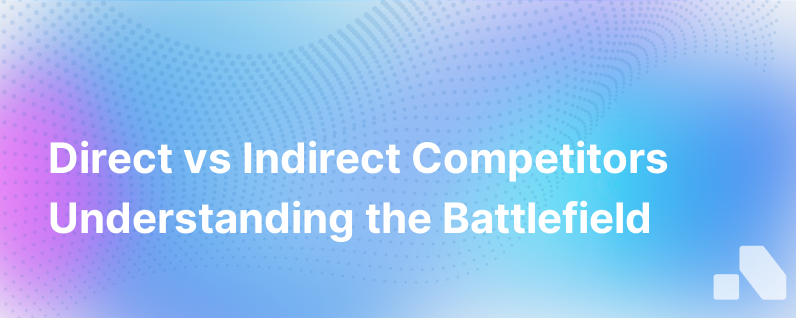Direct Vs Indirect Competitors
Published on October 23, 2023 by David Zhang
Navigating the competitive landscape is like treading on a battlefield. You need to know exactly who your rivals are to firmly gain ground. Notably so, understanding your competitors not only shapes your strategy but also helps you position yourself in the market.
Broadly, businesses face two types of competitors: Direct and Indirect. This guide will aid you to understand the difference between direct and indirect competitors and how understanding each aids in crafting a winning business strategy.
Understanding Direct vs. Indirect Competitors
Direct and indirect competitors cater to the same market but vie for the consumers' attention differently. Here's an in-depth look at each:
Direct Competitors
Direct competitors are businesses offering the same, or very similar, products or services as your own. They operate in your geographic region and cater to a similar target audience. Strategic moves generated by direct competitors can significantly impact your business.
For example, if you run a coffee shop, other coffee shops in and around your location cater to the same audience, offering similar items like lattes, espressos, etc. They are your direct competitors.
Indirect Competitors
Indirect competition arises from businesses offering different, yet substitutable, products or services. They cater to the same target audience but offer an alternative solution to the same problem.
Leading on from the previous example, indirect competitors for your coffee shop could be tea houses, juice stores, or even home coffee brewing products. They all offer an alternative solution to the consumers' need for refreshments and target the same demographic group.
Importance of Understanding Direct and Indirect Competitors
A deep understanding of competition is crucial to position your business effectively in the market. Specifically:
- Better Market Positioning: Understanding your competition can help to highlight your unique value proposition and give you a competitive edge in marketing efforts.
- Guided Business Strategies: You gain insights to shape your marketing, sales, and overall business strategies, helping you to stay one step ahead.
- Informed Pricing Strategies: Pricing your products correctly in relation to competitive offerings can help improve revenue and market share.
Techniques to Identify Your Direct and Indirect Competitors
There are many means to identify your competitors. Online research, industry reports, and market surveys can provide substantial insights. You can also directly ask your customers about alternative products/services they considered before choosing yours.
Analyzing Direct Competitors
- Product/Service Comparison: Compare product/service features, delivery methods, pricing, and after-sales service quality.
- Marketing Strategies: Evaluate advertising channels, promotional activities, PR strategy of your direct competitors.
- Customer Reviews: Online reviews can bring you insights about your competitors' strengths and weaknesses.
Analyzing Indirect Competitors
- Market Surveys: Conduct market surveys among your customer base to identify substitute products/services they use or consider.
- Industry Reports: These reports can yield insights into upcoming industry trends and potential indirect competition.
Competitor Analysis Framework
To benefit from the insights, you need to systematically analyze your competitors. Porter's Five Forces is a well-established framework that allows businesses to do just that. It includes:
- Industry Rivalry: The intensity of competition among existing businesses.
- Threat of New Entrants: The risk posed by potential new competitors.
- Bargaining Power of Suppliers: The control suppliers can exert over pricing and quality.
- Bargaining Power of Customers: The control customers can exert over pricing and quality.
- Threat of Substitutes: The risk posed by indirect competitors offering alternative and substitutable products/services.
Leveraging Competitive Analysis: Actionable Steps
Post analysis, you should be equipped to leverage the insights to gain a competitive advantage. Here's how:
- Product/Service differentiation: Based on the analysis, highlight your unique selling points and use them to differentiate your product/service from the competition.
- Marketing and Sales: Leverage the insights to craft more compelling marketing and sales narratives.
- Pricing strategies: Devise your pricing strategy according to what you've learnt about your competitors'.
Conclusion
Understanding competitor dynamics, direct and indirect, can shape your tactical and strategic decisions, leading to lasting competitive advantage. Mapping out your competitive landscape might seem daunting. Thankfully, tools like Aomni provide updated competitive intelligence, enabling you to build compelling sales narratives. As Benjamin Franklin said, "By failing to prepare, you are preparing to fail." Therefore, invest in understanding your competition, and prepare to succeed.